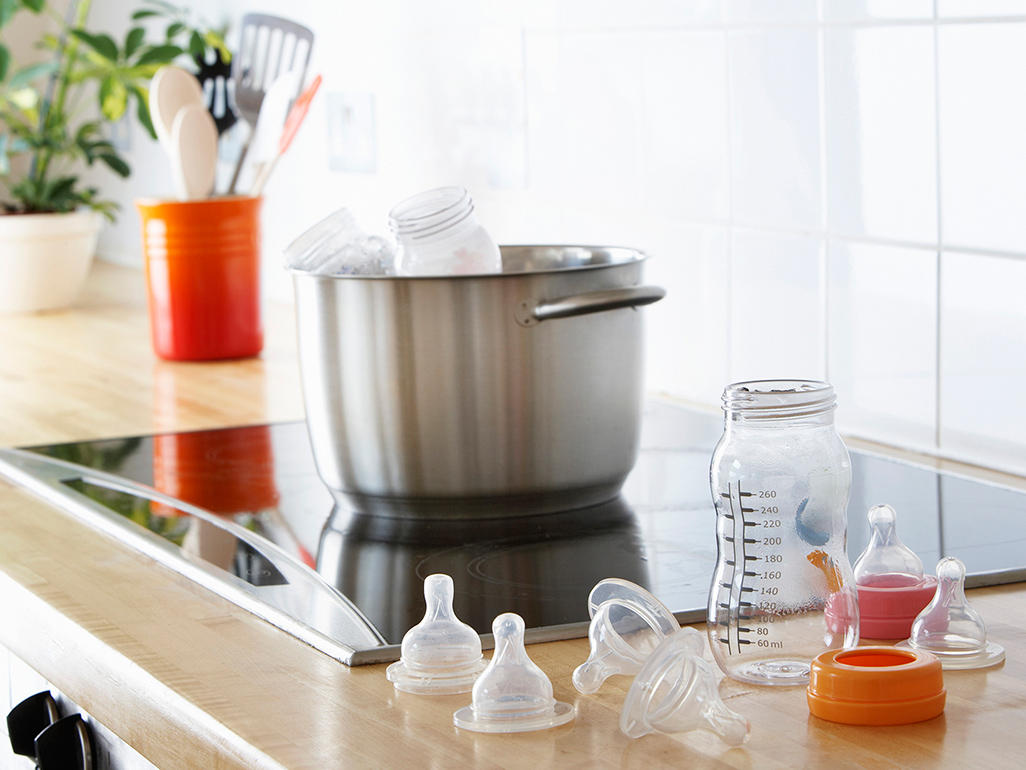You may have already bought a sippy cup Malaysia but your baby is still drinking milk out of a baby bottle that you also recently bought. At least they are able to nourish themselves, but now comes the question of their bottle’s hygiene.
Knowing that the bottle can be contaminated with spent milk, more so if it sits inside longer than the permitted time, washing the bottle like a normal cup won’t do. You know that you need extra measures to sterilize your bottle, but what are the methods?
A Few Tips
Before you can dive into sanitizing your baby bottle, heed a few tidbits. All parts of the bottle must be separated and cleaned. The teat must be pulled off its screw cap too. Wash the parts in hot soapy water as soon as possible after feeding.
Use a clean bottle brush to clean bottles and a small teat for the inside of said teat. Do not even think of using salts to clean teats as this can be harmful to your baby.
Cold Water Sanitation
To sterilize your baby bottle and other feeding equipment with cold water, be sure to follow the manufacturer’s instructions. Immerse them in cold water for a minimum of 30 minutes. This solution must also be changed every 24 hours, and it must not have air bubbles trapping the bottle.
To ensure that it remains immersed in the solution, use a floating cover or plunger.
Boiling Sanitation
Put all of the parts of your bottle into a saucepan or pot filled with water. Boil them for five to ten minutes, making sure to set the timer so you do not forget to stop the heat. With clean tongs, take out the parts and put them in a container. Seal it tightly and place it in the fridge for up to 24 hours.
It must be noted that the teats can be easily damaged with this method, so regularly check that itself and the bottle aren’t cracked, torn or damaged.
Steam Sanitation
Steam sterilisers are popular due to their cheap cost, quick and effective work. Water is heated to a boiling point where bacteria is killed by the steam. Some steam sterilisers are designed to be utilized in a microwave, so check the manufacturer’s instructions to be sure.
When placing the bottle and its parts in a steriliser, make sure that there is enough room between each other so steam can properly circulate every surface. How much water to add and how long you can leave them in the steriliser prior to another sanitization depends on the manufacturer’s guidelines.
If you are using a microwave steriliser, place it in a microwave and set it at the correct time.
Once you have finished the steam sanitization process, place the bottle and all of its parts in a clean lidded container, then similar to the end of the boiling method, leave it in the fridge for 24 hours.
Bleach Sanitation
If you couldn’t use any of the above methods, chemicals are also another step you can take to sterilize your baby bottle. Bleach is the most commonly used chemical, so this step will focus on using bleach. Be careful that it doesn’t come into contact with your skin.
Prepare a solution consisting of two teaspoons of unscented bleach per gallon, or 16 cups, of water in a clean wash basin. Like the cold water method, place the bottle and its parts into the solution. Ensure that they are wholly submerged and no air bubbles are trapping them.
Leave them for at least two minutes, then remove with clean hands or tongs. Never rinse as germs will return onto the sanitized parts. Do not worry about any remaining bleach harming your baby, it will quickly break down during the drying process. This process is also used to sanitize dishes in restaurants.
When drying the bottle and its parts, place them in a clean paper or dish towel in a place protected from dirt and dust. Only store them after they are air-dried thoroughly. Do not rub or pat them dry as the same consequence as rinsing them will happen.


